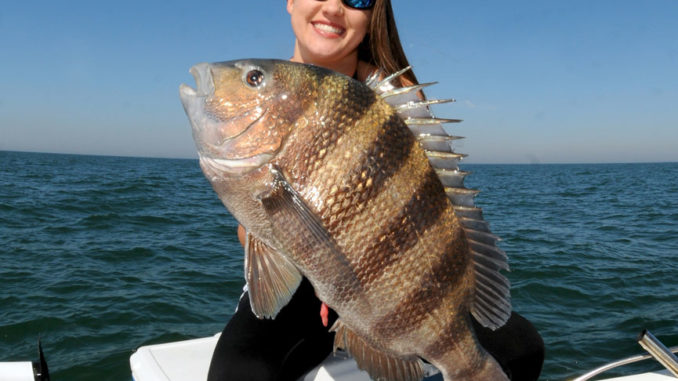
Fiddler crabs are top bait for convict fish along Winyah Bay’s jetties
As summer brings on its heat, anglers looking for a tasty, combative target need look no further than the jetties that line the entrance to Winyah Bay. When hot weather arrives, sheepshead will take over the archaic jetty rocks, and tides and time of day are the least of a fisherman’s worries.
While not as widely recognized as redfish, speckled trout and flounder, fishing for sheepshead is growing in popularity among South Carolina anglers. Growing to sizes exceeding 10 pounds, sheepshead are extremely powerful fish, one of the strongest around, pound for pound. Every knot and line connection between the reel and their teeth must be flawless to get them into the boat and the cooler. Unfortunately, sheepshead live in treacherous abodes covered with jagged oysters, barnacles and other line-shearing debris.
Late in spring, sheepshead move from the ocean back inshore, setting up around docks, oyster bars and especially the protective jetties, which provide more than six miles of rocks that are flooded with fish during the summer.
This century-old structure provides excellent habitat for sheepshead, which will hold tight to the rocks, in part to keep from becoming a menu item for even bigger predators that may be around: sharks, mackerel and barracuda. Capt. Tommy Scarborough of Georgetown Coastal Adventures gets real close to the rocks to catch sheepshead.
“I get close enough so I can fish inside the rocks,” said Scarborough. “If you aren’t in the cover, you might as well have your bait in the boat.”
Many of the massive boulders set in place at the end of the 19th century have shifted from their original spots, and the forces of nature have caused structural deterioration, but that plays right into Scarborough’s game plan.
“When you find areas where the rocks are fallen off some, with big holes in the rocks, that is what I am looking for,” he said.
Capt. Jordan Pate of Carolina Guide Service is also a fan of summer sheepshead; he looks for specific areas along the jetties to find his quarry.
“I find changes in the rocks: elbows, mounds or any kind of change in the rocks,” said Pate. “Places where they stick out tend to be the better spots. For the most part, you will not have to fish more than one or two spots before you find them stacked up.”
With many spots available to fish, Pate will idle down the rocks and look for irregularities. Even though he said fish will bite all through the tide cycle, he prefers places or periods of low current.
“A slower-moving tide is what I like the best. It helps your baits and chum stay in the right spot, as well as boat positioning,” he said.
On the rising tide, the water will often be clear, and Pate will look for the fish themselves. Sunny days are preferred because it’s easier to see down in the water from above. While sheepshead can be caught in dingy or stained water, they tend to bite better in clearer areas or on clear periods of the tide. They are better able to see in clearer water.
Scarborough fishes both the incoming and outgoing tides, but he will change sides of the rocks, depending on the stage of the tide.
“I like the water clear,” he said. “I fish the inside of the rocks on the incoming tide and the outside on the outgoing tide to find the clear water.”
The Winyah Bay jetties are at the outlet for the massive Pee Dee River basin, which drains more than 7,000 square miles of watershed. As a result, the outgoing tide can bring in a lot of turbid water that is not favorable for sheepshead fishing. Scarborough fishes the outside of the jetties more than the inside due to that dirty water. His favorite stage of the tide is the early part of the rising tide from the dogleg to the beach.
“The green water starts filtering through the wall from the north beach side, and crap starts coming through the cracks in the wall, creating a 3- to 5-foot clear band running down the rocks,” he said. “It fires them up, and they start biting like mad.”
Scarborough also likes places along the jetties that have breaks in the wall; he calls them washouts.
“There is a good washout 100 yards from the end of the north mound and another good one along the south jetty about 50 yards from the end,” he said.
Sheepshead will eat everything, from tasty shrimp to hard-shelled crabs, barnacles, oysters and marsh mussels. While those crustaceans are highly favored by sheepshead, it’s often a problem to keep them on the hook long enough to get them to the sheepshead, so fiddler crabs are the baits of choice. Even though triggerfish, black sea bass, puffers, oyster toadfish and pinfish will gobble up fiddlers, they will stay on the hook longer than any other primary sheepshead bait.
Pate’s terminal tackle is simple. He uses either a float rig with 4 to 5 feet of 20-pound fluorocarbon tied to a sharp 1/0 Owner hook, for a simple split-shot rig with a No. 1 split shot a foot or so above the hook.
“It’s a real simple rig for real simple fishing, but when they are cooperating, you can smoke them,” says Pate.
Scarborough uses a standard 2-hook rig over a single hook rig that he builds with 20- to 25-pound fluorocarbon and a 1/2-ounce brass ring sinker.
“It’s a little aggravating to build 2-hook rigs versus 1-hook rigs because you will lose rigs in the rocks, but you have two chances to detect the bite over one. You know they will steal one of your crabs, but you will be alert on the second one,” he said.
Scarborough fishes the holes inside the rocks. The 2-hook rigs with the weight placed on the bottom allow his anglers to feel the bottom and bounce the rig down into the rocks.
Out of all fish, the subtle bite from a sheepshead is so light that most bites go undetected. Sheepshead are referred to as convict fish for more than their black and white striped appearance. When dropping baits down for sheepshead, anglers should keep a close eye and feel. As soon as anything out of the ordinary is detected, anglers should set the hook. Sometimes it may just be a lightening of the pressure on weighted lines or a pause in the current for float rigs.
Pate recommends using braided line for abrasion resistance and the zero-stretch capabilities. For best results using weighted lines, anglers should keep contact with the line and lift up a foot or two and lower back down. If the line feels like it is stuck on something, immediately set the hook. Sheepshead have tough, bony mouths and a firm hookset is required.
Sheepshead fishing at the jetties can be extremely exciting and very productive through the summer. Fish are available from late spring through the fall, and anglers have plenty of time and a world of places to find these striped beasts along the historic rock structures.
DESTINATION INFORMATION
HOW TO GET THERE/WHEN TO GO — The jetties that line the entrance to Winyah Bay are accessible from three major public boat ramps: the South Island Ferry southeast of Georgetown on South Island Road, the East Bay Park landing at the ballpark in downtown Georgetown and the Carroll Campbell Marine Complex on the south side of the US 17 bridge over the Sampit River. Sheepshead fishing along the jetties begins in May when fish return from their winter hangouts in the ocean; they’ll normally stay until November. They can be caught all along both jetties, but look for spots with clear water.
TACKLE/TECHNIQUES — Chinaback fiddler crabs and marsh mussels are the baits of choice for sheepshead. For best results, anchor parallel to areas where there are breaks or holes in the jetties and fish bait right inside the rocks. Chumming crushed oysters, barnacles, or dead fiddler crabs is very effective. Use either float rigs or split-shot rigs, but a basic 2-hook bottom rig can be effective. Either way, abrasion-resistant fluorocarbon leader of at least 20-pound test should be used around this structure attached to a braided main line. Medium-heavy baitcasting rods are preferred by many fishermen because of the control it gives them.
GUIDES/FISHING INFO — Capt. Jordan Pate, Carolina Guide Service, 843-608-8307, www.carolinaguideservice.com; Capt. Tommy Scarborough, Georgetown Coastal Adventures, 843-546-3543, www.captaintommy.com; Boat Shed Marina, Georgetown, 843-546-4415; Georgetown Icehouse, 843-546-6169; Pawley’s Island Outdoors, 843-979-4666.
ACCOMMODATIONS — Hampton Inn, Georgetown Marina, 843,545-5000; Georgetown Area Visitors Center, www.visitgeorgetown.com.
MAPS — Navionics, 800-848-5896, www.navionics.com; Delorme S.C. Atlas and Gazetteer, 800-561-5105, www.delorme.com; Capt. Seagull’s Nautical Charts, 888-473-4855, www.captainsegullcharts.com.

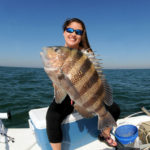
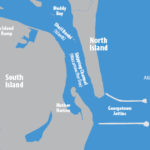
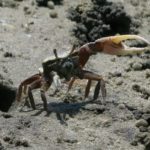
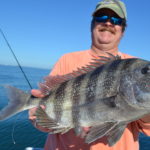

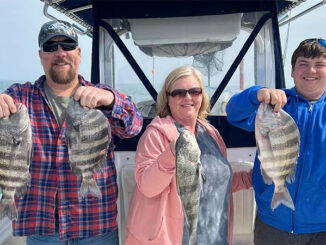


Be the first to comment